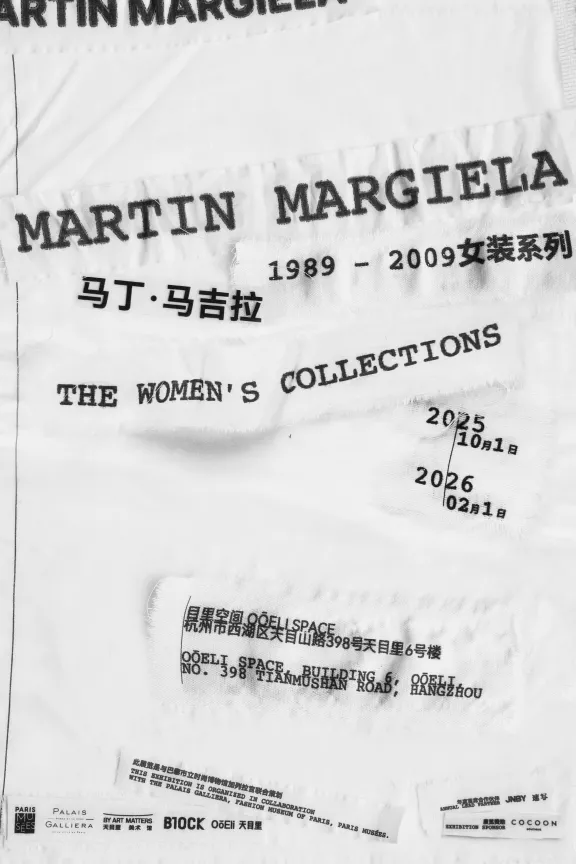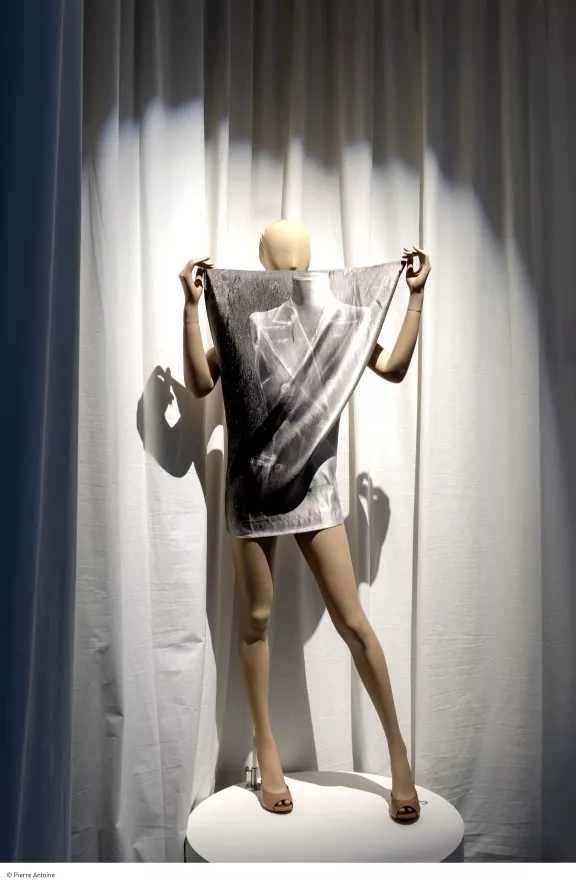Martin Margiela 1989 – 2009 The Women’s Collections
Du 01.10.2025 au 01.02.2026
The first comprehensive exhibition devoted to Martin Margiela ever presented in Asia, this landmark show presents more than 130 silhouettes, videos of runway shows, fashion archives, and specially conceived installations and traces his career from Spring–Summer 1989 to Spring–Summer 2009, showcasing the work of a designer who not only questioned the structure of garments but also challenged the structure of the fashion system. “MARTIN MARGIELA 1989 – 2009 THE WOMEN’S COLLECTIONS” offers an unprecedented survey of one of the most influential and enigmatic contemporary fashion designers.

- Publics :
- Accès : Building 6, OōEli, No. 398 Tianmushan Road, Hangzhou
This exhibition is organized in collaboration with the Palais Galliera, Fashion Museum of Paris and Paris Musées. It is presented in the contemporary art space BY ART MATTERS, in collaboration with B1OCK.
Martin Margiela (b. Louvain, Belgium in 1957) graduated from the fashion department of the Royal Academy of Fine Arts, Antwerp, in 1980. After a stint as Jean Paul Gaultier’s assistant between 1984 and 1987, he became associated with the Antwerp school and the only Belgian designer of his generation to have founded his own fashion house in Paris. For the Spring-Summer 1990 collection, Margiela presented his third runway show in a derelict Parisian wasteland. Models walked amid seated neighborhood children, wearing deconstructed garments, raw hems, and repurposed items transformed into clothes or accessories. The unconventional setting, the visible traces of construction, and the dismantling of fashion’s polished codes caused a sensation, marking a decisive break from the opulence of the late 1980s and signaling the arrival of a new avant-garde.
Still a major creative reference worldwide, Margiela’s conceptual approach challenged the fashion aesthetics of his time. He constructed garments by deconstructing them—exposing linings, unfinished seams, and the stages of manufacture: pleats, shoulder pads, patterns, muslins, and bastings or shoulder pads.
He pushed proportions to extremes, enlarging garments with his “Oversize Collections” or adapting dolls’ clothes for life-size wear. He printed trompe-l’œil photos of dresses, sweaters, and coats, and introduced the “cloven” shoe inspired by traditional Japanese tabi.
Margiela also questioned the obsolescence of clothing. His “Artisanal” collection repurposed garments and recovered materials into unique, hand-sewn pieces. The “Replica” series faithfully reproduced vintage clothing sourced from around the world.
A designer without a public face, Margiela eschewed interviews, used a plain white label without a brand name, and embraced white in countless shades. His shows unfolded in unexpected spaces—car park, warehouse, metro station etc.
Pioneering in vision and uncompromising in execution, Martin Margiela shaped a new language of fashion that continues to resonate with designers today. His radical ideas opened new paths for experimentation, influencing generations who followed. Margiela’s legacy endures not only in the ideas he championed, but in the extraordinary precision with which he brought them to life.
Alongside the main exhibition, B1OCK will present a special section on its first floor featuring archive pieces selected from Chinese collectors and fans of Martin Margiela’s work, gathered through an open call. This parallel exhibition celebrates the passion, discernment, and taste of Margiela’s Chinese fans, offering a rare glimpse into the ways Margiela’s creations have been preserved, cherished, and reinterpreted in China.

An exhibition originally presented in 2018 at the Palais Galliera, Fashion Museum of Paris, Paris Musées, under the artistic direction of Martin Margiela.
Curated by Alexandre Samson
Scenography by Ania Martchenko